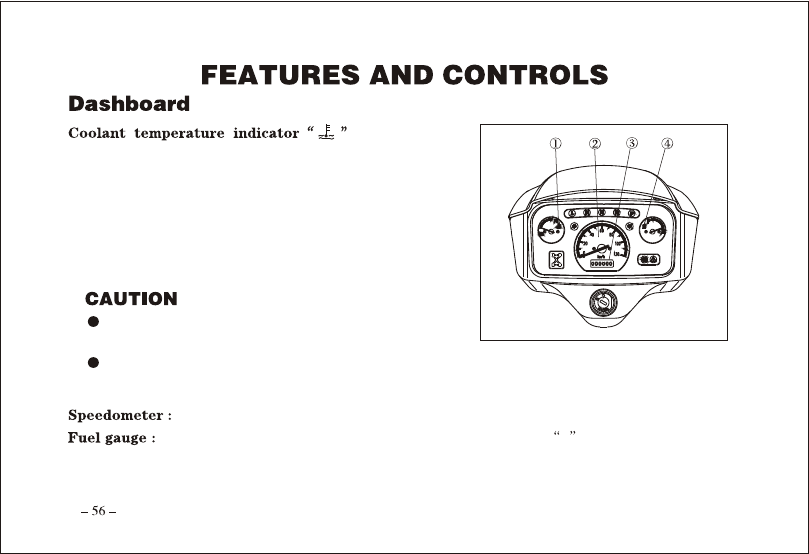CFMoto ATV CF500-A 4x4. Service Manual - part 4

when the temperature indicator is in the white area of side C, it
means that the temperature is normal. The red area of side H
indicates that the temperature is high. In that case please stop
the engine until the coolant temperature goes down. In case the
temperature frequently goes high, check coolant capacity or
consult the local dealer.
The engine may overheat if the ATV is overloaded. If this
happens, reduce the load to specification.
After restarting, make sure that the temperature indicator is in the white area of side C. Continuous use
while the temperature indicator is in the red area of side H may cause damage to the engine.
shows the riding speed. Odometer : shows the total distance traveled.
indicates the remaining amount of the gasoline in the fuel tank.
F
indicates the total amount
of fuel is 19L. When the indicator reaches the first point of red mark, fuel should be refilled as soon as possible.
The red mark indicates that the remaining fuel is only about 4.0L.